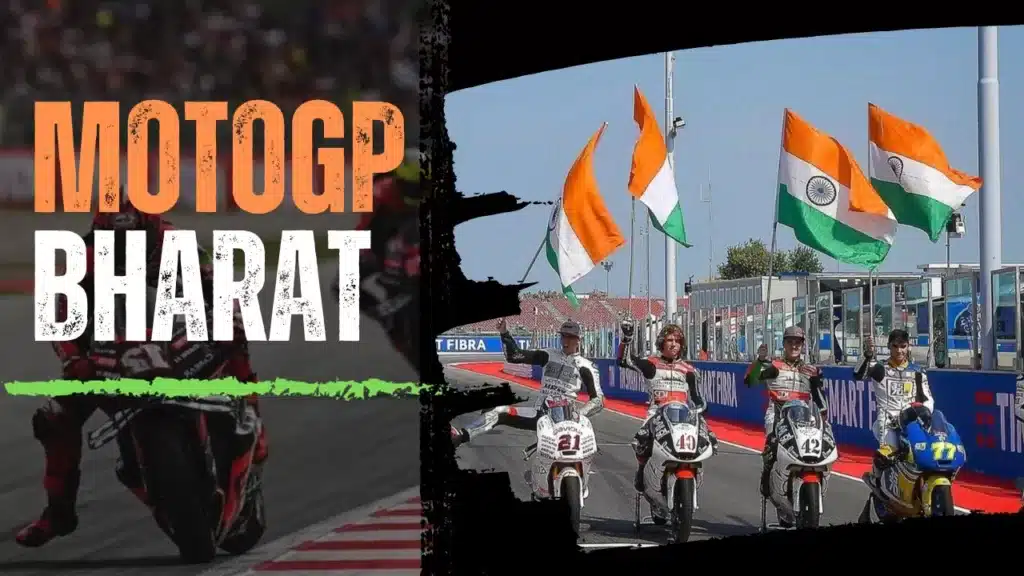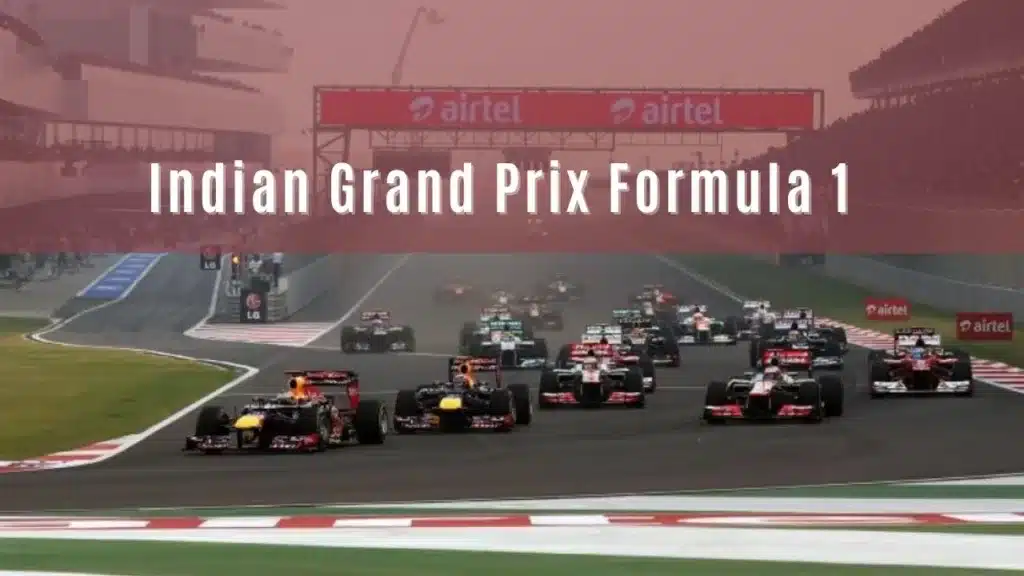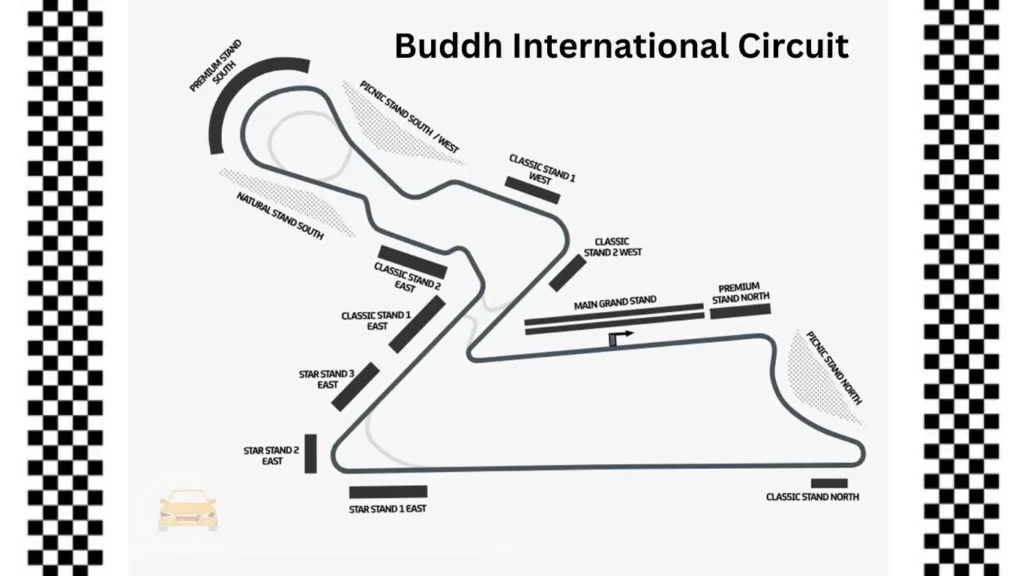Approximately 12 years ago, India embarked on a remarkable journey in the world of motorsports with the inauguration of the Indian Grand Prix Formula 1 racing event in 2011. This spectacular event took place at the Buddh International Circuit, strategically located near the Yamuna Expressway in Greater Noida, Uttar Pradesh. The initial contract for Formula 1 in India spanned five years, from 2011 to 2015, with the expectation of annual races held at the meticulously designed circuit, courtesy of the JP Group.

However, the story took an unexpected twist. Rather than a decade of racing excitement, the Formula 1 event in India concluded prematurely within three years. This abrupt exit from the Indian motorsport scene was accompanied by the JP Group’s financial crisis, stemming from the substantial investments made in track development and event promotion. The question that naturally arises is: What led to the Formula 1 racing event’s departure from India?
MotoGP fans in India have double reasons to celebrate. The current Indian GP, also known as Bharat GP, is going smoothly at the Buddh International Circuit this weekend. And mark your calendars for October 6, 2024, as MotoGP will return as the Indian GP, thanks to their commitment last year.
Challenges Faced by Formula 1 in India
The Indian Grand Prix Formula 1 event encountered numerous hurdles, many of which stemmed from the governmental landscape. When Formula 1 cars and associated equipment were imported into India, organizers grappled with extensive customs clearance issues. The bureaucratic labyrinth seemed inescapable, even for trivial matters. Central and state governments appeared lukewarm, if not unsupportive, toward the racing organizers.

However, the most formidable obstacle emerged from the state government of Uttar Pradesh, led by Chief Minister Akhilesh Yadav at the time. In a surprising move, the government refused to categorize Formula 1 racing as a sporting event, instead labeling it as mere entertainment. This reclassification resulted in the imposition of a staggering 25% entertainment tax on the racing event, proving detrimental to its sustainability. Thus, Formula 1 exited India and never returned, leaving the JP Group in financial turmoil.
The Political Shift and Its Implications
Now, let’s jump to the present day. Something big has happened in India’s politics. The Bharatiya Janata Party (BJP) is now in charge not only at the national level but also in Uttar Pradesh state. This change in leadership is a special chance for motorsports in India, especially for the eagerly awaited MotoGP event.
MotoGP India : A New Chapter Begins
MotoGP, organized by Fair Street Sports, is poised to make its presence felt in India through a seven-year partnership. Unlike Formula 1, the central and state governments have shown robust support for the organizers. A pivotal turning point came when motorsports were officially recognized as a sporting activity in 2019. This development led to a significant reduction in tax burdens, signaling a more favorable environment for motorsport events.
Government’s Support for MotoGP
In an enlightening interview with the Hindustan Times, Mr. Pushkar Rajsrivastava, the Chief Operating Officer of Fair Street Sports, emphasized the pivotal role played by the government in making MotoGP a reality in India. Streamlined approval processes, prompt issuance of No Objection Certificates (NOCs), and reduced bureaucratic complexities have eased the path for event organizers.
Dorna’s Confidence in India
Dorna, the folks who put together MotoGP, weren’t sure if they should bring the event to India at first. They knew that Formula 1 had a tough time in India before. But, after having a chat with Chief Minister Yogi Adityanath and Union Minister Anurag Thakur, Dorna felt sure that India is passionate about motorsports and is committed to making it work.
Government’s Last-Minute Heroics
The Indian government’s support extended to last-minute visa approvals for all MotoGP riders, ensuring that the event could proceed without any logistical obstacles.
Motorsports: A Catalyst for India’s Growth
Motorsport events in India offer more than just thrilling races; they play a pivotal role in boosting the nation’s economy and tourism industry. Prime Minister Narendra Modi has underscored the significance of sports tourism in India, drawing inspiration from countries like Qatar.
Passionate Indian Fans
India boasts the largest population of two-wheeler riders worldwide, making it an ideal market for events like MotoGP. The fervor of Indian fans for motorsports surpasses even that of their European counterparts.

motoGP india tickets price:
Certainly, here’s the information about MotoGP ticket prices in India with rewritten descriptions:
Rs 2,500
- Picnic Stand North: This is a lawn seating area that offers a natural and comfortable environment for spectators. You’ll have excellent views of turns 1, 2, and 3.
- Picnic Stand South/West: Another lawn seating option, this stand is strategically placed between turns 10, 11, and 12, ensuring you don’t miss any of the action in this thrilling section of the track.
- Natural Stand South: Positioned between turns 7 and 8, this lawn seating area provides spectators with an ideal vantage point to witness the excitement at turns 6, 7, and 8. You’ll also get limited views of the nearby turn 11.
Rs 6,000
- Star Stand 1 East: This uncovered stand offers a great view of the riders as they brake hard, transitioning from the long straight into the challenging turn 4.
- Star Stand 3 East: Positioned strategically, this uncovered stand allows you to witness the riders exiting turn 4 and accelerating through the straight towards turn 5.
- Classic Stand 2 East: Located in a prime spot, this uncovered stand is perfect for those who want to see the riders’ agility on display. You’ll get a clear view of the action at turn 5 and the short straight leading to turn 6.
In Conclusion:
The successful organization of MotoGP in India signifies a paradigm shift in the political landscape and the government’s newfound enthusiasm for motorsports. The unwavering support extended by both the central and state governments has paved the way for a brighter future for motorsports in the country. This not only contributes to tourism and showcases India’s passion for racing but also underscores the nation’s commitment to fostering excellence in motorsports on the global stage.






